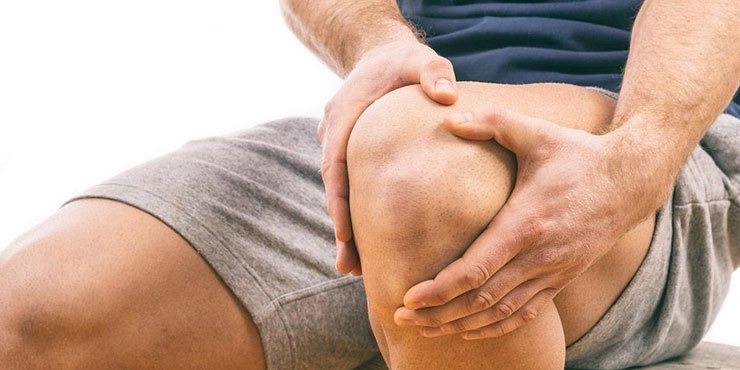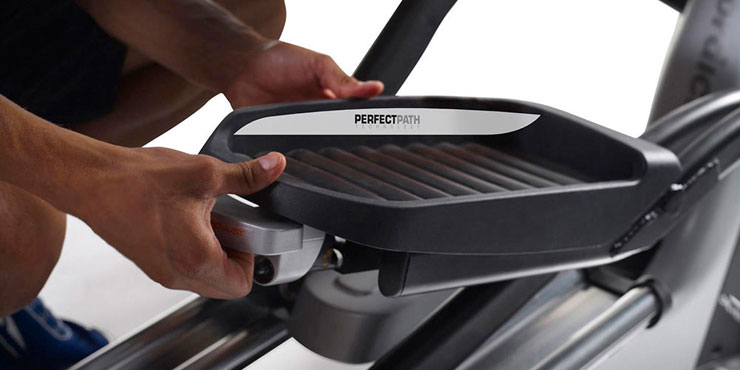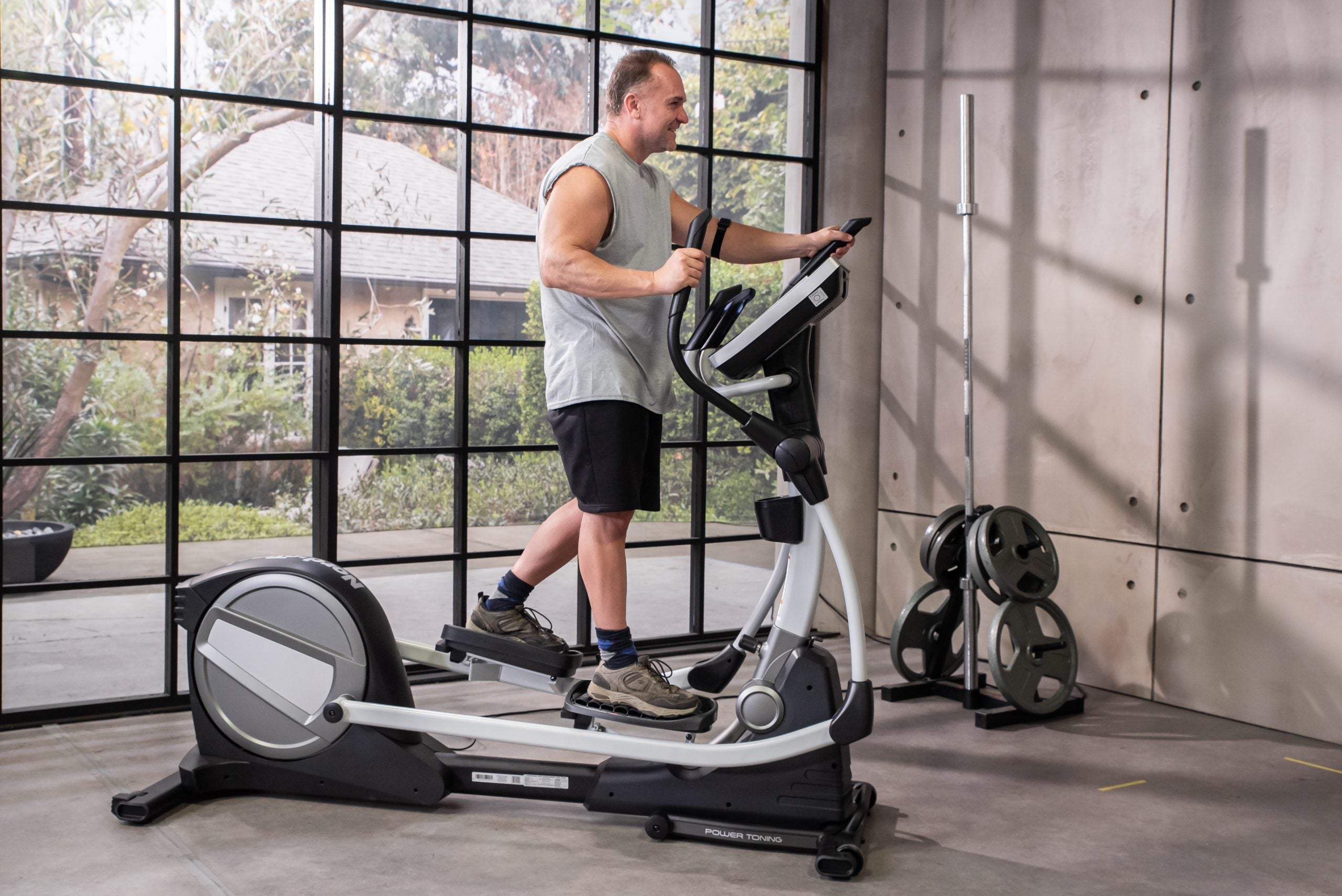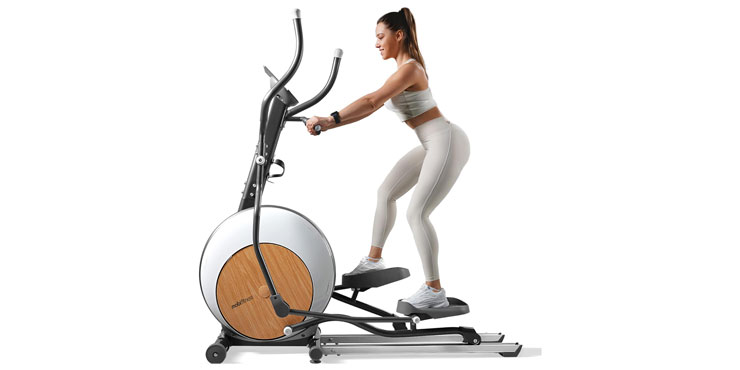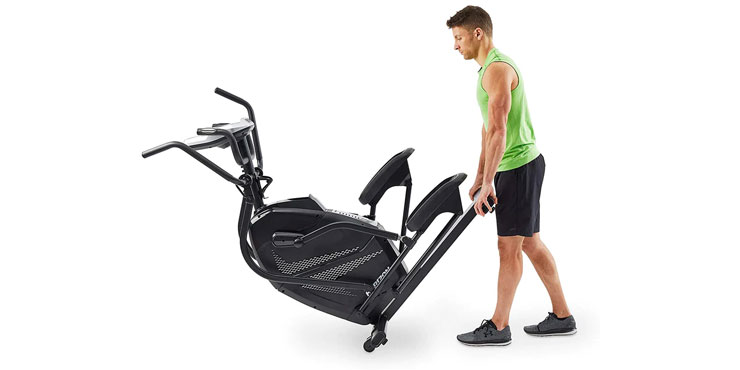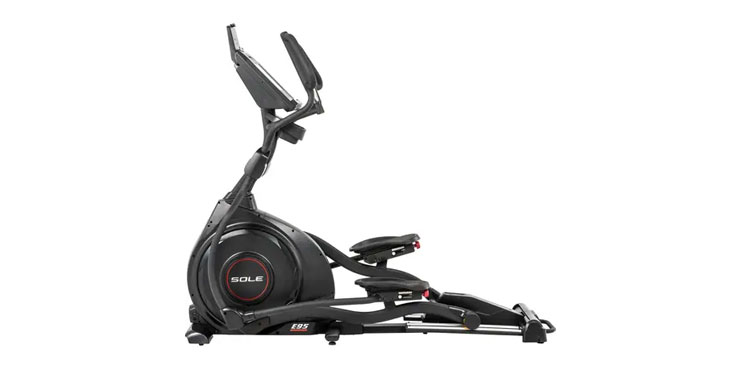How to Protect Knees on Elliptical
As a fitness trainer, I always emphasize how important it is to think about how to protect knees on elliptical machine. Improper use of an elliptical can easily lead to knee injuries, but there are things you can do to safeguard your joints during your workout. Here are some tips I share with my clients on how to protect knees on an elliptical:
First, always make sure the elliptical is properly adjusted for your height and stride length before starting your workout. If the handles, pedals, and ramp are at the wrong angle, your knees will be unnecessarily stressed as you use the machine. Take the time to optimize the settings for your body proportions. Second, build up your resistance and workout time gradually over time to avoid overloading your knees early on. It’s better to start with shorter, easier sessions and increase the intensity slowly.
Third, focus on maintaining proper form – upright posture, engaged core, soft knees – throughout the movement to minimize stress on your joints. Don’t lock or hyperextend your legs. And fourth, try to use your glutes and hamstrings more than your quads as you pedal and stride. Keeping the work in your large thigh muscles takes some of the load off your knees.
Now let’s look at the training process in more detail and I’ll give possible recommendations.
Contents
- Disclaimer:
- Why it’s important.
- Some Statistics
- What factors increase the risk of injury?
- The main complications can be:
- Choosing the Right Elliptical Machine
- Proper Foot Placement and Posture
- Start with a Warm-up
- Gradual Increase in Intensity
- Monitor Your Stride Length
- Avoid Leaning Forward
- Listen to Your Body
- Cooling Down
- Additional Tips
- FAQs: How to Protect Knees on Elliptical
- Conclusion
Disclaimer:
This information provided is for general guidance and should not replace professional medical advice. If you have existing knee issues or concerns, they should consult a healthcare provider before starting any new exercise routine.
I’m only suggesting the approach I used myself when I had similar difficulties. I consulted with my trainer, my doctor.
Why it’s important.
Protecting the knees should be a top priority when working out, especially on high-impact machines like the elliptical. Here is an explanation focused on the importance of knee health:
The knees are incredibly vulnerable to injury and wear-and-tear during exercise. This is because they absorb tremendous force and torque with every stride and rotation. Without proper precautions, it’s easy to place excessive stress on the knee joints during elliptical workouts and other cardiovascular activities.
Over time, improper form or overexertion can inflame tendons, strain ligaments, and even damage cartilage. This not only causes immediate pain, but can lead to debilitating osteoarthritis down the road. Once the knees are compromised, many exercises become difficult or impossible.
That’s why it’s so important to be mindful of how you use your knees anytime you workout. Taking measures to protect them – like adjusting equipment properly, watching your form, building strength gradually – will safeguard your joints against injury. This ensures that you can continue exercising and remain active for years to come.
Prioritizing knee health maximizes the long-term benefits of working out. It means you can keep your cardiovascular fitness improving while avoiding injuries. Paying attention to the knees now prevents painful problems later. So be proactive and focus on proper technique, settings, stretches and strength training. Your knees will thank you!
Some Statistics
According to the American Academy of Orthopaedic Surgeons, knee pain is the most common musculoskeletal complaint that prompts doctor visits worldwide. Knee osteoarthritis alone affects more than 300 million people globally.
In the United States, a National Health Interview Survey in 2019 found that over 19% of adults reported having knee pain or problems in the past 12 months. Rates were higher in women compared to men.
In the United Kingdom, a 2020 study estimated around 4.7 million people have sought treatment for osteoarthritis of the knee at some point in their lives. Knee osteoarthritis affects 33% of people over 45 years old.
What factors increase the risk of injury?
Knee pain while using an elliptical machine can be attributed to several factors. One common cause is poor alignment or improper form during exercise. If your feet are not positioned correctly on the pedals, or if you’re overextending your knees with each stride, it can lead to discomfort and pain.
Additionally, overuse or pushing yourself too hard on the elliptical without proper warm-up and stretching can strain the knee joints. It’s important to maintain a smooth and controlled motion while using the machine and ensure that the resistance and intensity levels are appropriate for your fitness level to prevent knee pain during your workout.
If knee pain persists, it’s advisable to consult a healthcare professional for a proper evaluation and guidance.
The main complications can be:
Poor Posture: If you're new to elliptical exercise, poor posture is a likely culprit for knee pain. Proper alignment and form are crucial on the elliptical, as incorrect foot placement or improper leg movement can increase the risk of injury. To ensure you're using the machine correctly, consider working with a personal trainer who can offer specific feedback on your form.
Over- or Under-worked Joints: Another contributing factor could be overexertion or a lack of flexibility. Exercising for too long or starting without adequate flexibility can strain your knee joints. Adjusting the duration and intensity of your elliptical workouts to match your fitness level can help your body adapt and prevent discomfort.
Age and Weight: Being overweight places extra strain on your knees, though elliptical workouts are kinder to your joints compared to higher-impact exercises. Older individuals may experience knee pain due to prolonged wear and tear on their knees and the natural breakdown of cartilage over time.
Previous Knee Injury: Past knee injuries can resurface when using an elliptical, as they often leave lasting effects. Taking proactive measures to prevent further damage while exercising on the elliptical is essential.
Other Medical Conditions: Certain medical conditions, such as arthritis, gout, back problems, or pain syndromes, can contribute to knee pain while using an elliptical. If you have these conditions or any others causing discomfort, consulting a healthcare professional for tailored advice is advisable.
Choosing the Right Elliptical Machine
When selecting an elliptical for your home or gym, it’s crucial to pick a model with adjustable stride length and resistance levels. Having these customizable settings allows you to tailor the machine perfectly to your body’s needs, which is essential for protecting your knees.
The ideal stride length while using an elliptical trainer minimizes stress on your joints by allowing your legs to move through a comfortable range of motion. If the length is too exaggerated or limited for your height and proportions, it places unnecessary torque on the knees with each rotation. Adjustable machines permit you to find just the right striding span for your build.
Similarly, customizable resistance provides the ability to gradually increase the workout intensity without pushing your knees past their limits. Starting on lower settings and slowly building up leg strength reduces impact on the joints. Automatically variable resistance also mimics the natural fluctuations of outdoor running or cycling.
In summary, an elliptical trainer with personalized options for stride length and resistance allows you to find the perfect fit. This in turn ensures your knees stay happy and injury-free while you exercise. Checking for these adjustable features should be a top priority when choosing a new elliptical. Your knees will thank you!
Proper Foot Placement and Posture
Proper foot placement and posture are critical for protecting the knees during elliptical workouts. Here are some tips on getting it right:
When using an elliptical trainer, your feet should be planted firmly on the pedals in a natural position. Avoid tilting the ankles inward or outward. Keep the balls of your feet centered on the pedals for a comfortable striding motion. If your feet are positioned awkwardly on the pedals, it torques the knees and strains the joints with every rotation.
Posture is also hugely important. Be sure to stand upright with an engaged core, rather than hunching over the machine. Maintaining alignment from head to toe allows you to use your glutes and hamstrings more effectively while taking pressure off the knees. Leaning forward or rounding the shoulders shifts stress onto the knee joints, which can gradually cause damage.
In summary, positioning your feet properly centered on the pedals and keeping good upright posture together ensure that every stride is smooth, natural and low-impact. This greatly reduces repetitive stress injuries to the knees over time. Making small adjustments to your foot placement and posture prevents big problems down the road!
Start with a Warm-up
Starting with a dynamic warm-up is crucial for keeping knees safe during elliptical workouts.
Here are some tips:
Before jumping onto the elliptical machine for an intense cardio session, it’s vital to properly warm up the muscles, especially in the lower body. Cold, tight muscles and joints are vulnerable to strains and tears when suddenly put under pressure.
Spend at least 5-10 minutes warming up to increase blood flow to the leg muscles and enhance their pliability. Some beneficial dynamic stretches include bodyweight squats, walking lunges, knee raises, hip circles, and ankle rotations. Move gently through the full range of motion to mobilize all the major joints.
A proper warm-up primes the muscles for the workout ahead, protecting the knees by increasing their range of motion and reducing tightness. It also elevates the heart rate slowly and prepares the cardiovascular system. Starting your elliptical routine after dynamic stretching will make the workout smoother and safer. The knees bear less stress when the surrounding muscles are limber.
In conclusion, never skip the warm-up! Take the time to gently wake up the lower body and prevent knee injuries before intense training. Those preparatory minutes can make or break the safety and effectiveness of your workout.
Gradual Increase in Intensity
I always advise my clients to build up slowly when adding elliptical workouts into their routine. I often see folks who are excited to ramp up the intensity too quickly end up with knee pain and setbacks. I’ve learned it’s crucial to start at a low intensity and increase the resistance and speed gradually over multiple sessions.
When I begin elliptical training with a new client, I have them warm up for 10 minutes at a very easy pace with minimal resistance. We focus on maintaining proper form and getting the muscles activated before adding intensity. Over the next few weeks, I’ll have them increase the resistance slightly each session until we reach a moderate level. After that foundation is built, then we can add incline or pick up the pace for short intervals.
This steady progression allows the muscles, ligaments and tendons surrounding the knees to adapt at a safe rate. When you increase the demands too abruptly, it overwhelms the knees before they’ve built up strength. I always explain how patience in the beginning prevents injury and pain down the road. It may not feel like much at first, but advancing slowly leads to better fitness and knee joint stability. Trust me, your knees will thank you later for starting gradually now!
Monitor Your Stride Length
It’s important to pay close attention to their stride length on the elliptical. It’s tempting to take long, exaggerated strides to really feel the burn in your legs. However, overstriding can put a lot of unnecessary stress on your knee joints over time.
When I use the elliptical, I make sure my stride length feels natural and comfortable without any strain. My knees should have a soft bend and never lock out or hyperextend. I try to let my legs move through a moderate range of motion that works the muscles while keeping the knees stable.
If I notice my strides getting too long, I shorten them up a bit to take pressure off the knees. An exaggerated stride that really stretches your legs on every rotation can strain the ligaments and tendons surrounding the knee. I’ve learned it’s much better to maintain a controlled, mid-range stride rather than pushing those additional couple inches.
In the end, proper form is more important than maximizing your stride length. Find what feels right for your body rather than what looks impressive. Your knees will thank you for keeping those strides in check! Shorter and controlled is better than longer and risky when it comes to protecting those joints.
Avoid Leaning Forward
It’s common to see people slouched over the handles as they intensely push through an elliptical workout. However, leaning too far forward puts additional strain on the knees with each stride. It takes the work out of the glutes and hamstrings and places more pressure on the knee joints.
Try your best to maintain an upright posture throughout your elliptical session. Engage your core muscles to keep your back straight and avoid rounding your shoulders. This aligned position keeps the resistance and impact flowing through the backs of the legs, protecting the knees.
If you notice yourself hunching over as you fatigue, stand up tall again and lighten the resistance or pace. It’s natural to start leaning forward when muscles tire, but that’s when knees are most prone to injury. Stay conscious of posture and keep the shoulders back.
In short, avoiding a significant forward lean is crucial for preventing excessive knee strain during elliptical workouts. The upright body position keeps impact manageable and knees healthy.
Listen to Your Body
Be very in-tune with your knees throughout your elliptical workout. Pay attention to any sensations of discomfort, stiffness or pain. Don’t try to push through joint pain – stop right away if you experience it. Forcing the motion can make minor issues much worse.
Knee pain arising during an elliptical workout, especially if it lingers afterward, is a clear sign you need to adjust your technique. Take a break from training, ice the knees, and re-evaluate your setup, posture, intensity level, etc.
See a physical therapist or sports medicine doctor if knee pain becomes sharp or persistent. They can assess the joints for damage and provide recovery exercises. It’s always better to rest at the first sign of trouble rather than jeopardizing your knees by overtraining.
Listening attentively to knee feedback allows you to respond proactively. Being aware and modifying your elliptical use early can prevent severe injuries. So stay vigilant, and don’t override what your body is telling you. Knee health should always be the top priority.
Always make time to stretch the major lower body muscle groups after finishing your elliptical workout. Static stretching while the muscles are warm enhances flexibility and range of motion. This reduces post-exercise soreness and muscle tightness that can compress the knee joints.
Some great stretch options include:
- Quad Stretches – Stand upright, bend one knee back and grab the ankle to gently stretch the front of the thigh. Repeat on both sides.
- Hamstring Stretches – Sit with legs extended. Lean forward, keeping back flat, to stretch the backs of the thighs.
- Calf Stretches – Place hands on a wall in front of you, stagger feet, bend back leg to stretch calf muscles.
- Figure-4 Stretch – Cross one ankle over the opposite knee while seated. Gently lean forward to open up the hips.
Regularly stretching the muscles surrounding the knees in this manner improves mobility and prevents the kinds of imbalances that lead to joint pain. Make it a priority after elliptical workouts to support knee health.
Cooling Down
It’s crucial to incorporate a cool down period of at least 5-10 minutes when wrapping up an intense elliptical cardio session. This gives your heart rate and breathing a chance to gradually return to normal levels.
Abruptly stopping after high-intensity training can cause lightheadedness, cramping or strain on the knee joints. Continue moving at a slow, easy pace and lower the resistance to allow blood to smoothly circulate.
You can also perform some gentle stretches for the lower body during this time, such as lunges, hamstring stretches, and calf raises. This prevents muscles from tightening up.
The cool down transitions your body from an elevated state back to a more relaxed state. Making time for this allows the knees to decompress and regain stability after being under stress. Proper cool downs promote recovery and flexibility.
So be sure to make the cooldown a priority whenever you train! Those last 5-10 minutes of low-intensity movement make a huge difference for keeping knees feeling healthy day after day.
Additional Tips
There are some additional tips beyond elliptical form that can protect the knees:
- Cross-train regularly with low-impact activities like swimming, cycling, or rowing to give your knees a break from the elliptical. This prevents overuse injuries.
- Incorporate strength training 2-3 days per week to build up the thigh, glute, and core muscles that stabilize the knees. Squats, lunges, and leg presses are great options.
- Maintain a healthy body weight if possible. Extra pounds put more strain on the knee joints with every stride. Losing weight relieves pressure.
- Wear supportive shoes with good cushioning and stabilization when using the elliptical. Proper footwear prevents rolling the ankles or knees.
- Listen to your body and allow for sufficient rest days. Knees require recovery time between intense elliptical workouts. Don’t overdo it.
- Consider joint supplements like glucosamine and chondroitin to support knee cartilage and lubrication.
FAQs: How to Protect Knees on Elliptical
Is elliptical good for knee joints?
Elliptical workouts are generally low-impact and can be beneficial for knee joints. The fluid motion reduces stress, making it a suitable option for individuals with knee concerns.
How to avoid knee pain on the elliptical?
To avoid knee pain on the elliptical, maintain proper form by keeping your knees aligned with your feet, avoiding excessive resistance, and using smooth, controlled movements. Ensuring proper footwear and gradually increasing intensity can also help prevent knee discomfort.
Are there specific elliptical techniques for sensitive knees?
Yes, there are techniques for sensitive knees. Focus on using lower resistance levels, maintaining a comfortable stride length, and avoiding excessive pressure on the knees during the elliptical workout.
What warm-up exercises help protect knees on the elliptical?
Gentle knee stretches, leg swings, and bodyweight squats are effective warm-up exercises to prepare your knees for an elliptical session. These movements help improve circulation and mobility in the knee joints.
Can the wrong elliptical worsen knee issues?
Yes, using an elliptical with improper form or incorrect settings can worsen knee issues. Using a machine that doesn’t provide proper alignment or causes discomfort can lead to increased strain on the knees, potentially exacerbating existing problems.
Conclusion
Here’s a summary of the key takeaways for protecting your knees while using an elliptical trainer:
The elliptical can be a very knee-friendly cardio machine, but only if proper precautions are taken. Be mindful of technique, intensity levels, and your body’s signals at all times.
Adjust the machine to fit your height and stride length specifically. Use the full range of motion without overextending. Maintain an upright posture and engaged core muscles while avoiding a forward lean.
Start every workout with a dynamic warm-up to increase blood flow to the lower body. Build up resistance and pace gradually over multiple sessions to allow knees to adapt. Avoid sudden intensity spikes.
Monitor stride length closely and keep it natural – no overstriding. Incorporate regular stretching during the cool down period. Also cross-train and strength train to give knees a break.
Most importantly, listen to your knees. Stop immediately at any discomfort or pain. Rest the joints fully between sessions. Knee health is the top priority.
Being cautious and following these tips will allow you to enjoy all the cardio benefits of the elliptical without causing harm. Protect those knees so you can keep actively moving!

